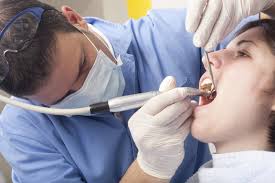Dentistry, once perceived as a field bound by tradition, has undergone a remarkable transformation in recent decades. Among the most significant advancements are those in dental filling techniques, revolutionizing how cavities are treated and teeth restored.
From traditional amalgam fillings to modern composite materials and cutting-edge technologies, the landscape of dental fillings has evolved to offer patients safer, more durable, and aesthetically pleasing options.
The Evolution of Dental Fillings
Historically, dental fillings were primarily composed of amalgam, a mixture of metals including mercury, silver, tin, and copper. While effective in restoring decayed teeth, concerns over the mercury content and aesthetic appearance of amalgam fillings prompted the development of alternative materials.
In the 20th century, composite resin emerged as a popular alternative to amalgam. Composed of a mixture of plastic and glass, composite fillings offer improved aesthetics and can be color-matched to the natural shade of the tooth. Additionally, composite fillings bond directly to the tooth structure, providing better support and reducing the risk of further decay.
Recent Innovations
Recent years have witnessed a surge in innovations aimed at further enhancing dental filling techniques. One notable development is the advent of nanotechnology in dentistry.
Nanocomposite materials, consisting of nanoscale particles dispersed within the resin matrix, exhibit superior strength, durability, and wear resistance compared to traditional composites. These materials enable dentists to create fillings that are not only aesthetically pleasing but also long-lasting.
Another groundbreaking innovation is the use of bioactive materials in dental fillings. Bioactive materials have the ability to interact with biological tissues, promoting the remineralization of tooth structure and inhibiting the growth of bacteria. By harnessing the body’s natural healing processes, bioactive fillings offer the potential for improved long-term outcomes and reduced risk of recurrent decay.
Digital Dentistry
Advancements in digital technology have also revolutionized dental filling procedures. Digital impressions, made possible by intraoral scanners, eliminate the need for messy impression materials, offering patients a more comfortable experience. These digital impressions can be used to design and fabricate custom-made dental restorations, including fillings, crowns, and bridges, with remarkable precision and accuracy.
Furthermore, computer-aided design and manufacturing (CAD/CAM) technology allows for the fabrication of chair side restorations in a single visit. With CAD/CAM systems, dentists can design, mill, and place ceramic fillings in a matter of hours, providing patients with immediate results and eliminating the need for temporary restorations.
Regenerative Dentistry
In recent years, regenerative dentistry has emerged as a promising field aimed at restoring damaged tooth structure and promoting tissue regeneration. Stem cell therapy, growth factors, and tissue engineering techniques hold the potential to regenerate dentin, pulp, and periodontal tissues damaged by decay or trauma.
While still in the early stages of development, these approaches offer hope for the future of minimally invasive, biologically driven dental treatments.
Challenges and Considerations
Despite the remarkable advancements in dental filling techniques, challenges remain. One such challenge is the cost associated with newer materials and technologies, which may limit access for some patients.
Additionally, the longevity and performance of dental fillings depend not only on the materials used but also on factors such as proper technique, patient compliance, and oral hygiene habits.
Furthermore, the debate over the safety of certain materials, such as amalgam and resin-based composites, continues to divide the dental community. While extensive research has demonstrated the safety and efficacy of these materials, ongoing studies are needed to address concerns and ensure patient confidence.
Conclusion
Innovations in dental filling techniques have transformed the field of dentistry, offering patients a wide range of options for restoring and preserving their smiles. From nanocomposites to bioactive materials, digital impressions to regenerative therapies, the future of dental fillings holds great promise for improved outcomes and patient satisfaction.
As technology continues to advance and research progresses, dentists are better equipped than ever to provide patients with safe, durable, and aesthetically pleasing dental restorations. By embracing these innovations and staying at the forefront of dental technology, dentists can continue to deliver high-quality care and ensure the long-term oral health and satisfaction of their patients.

